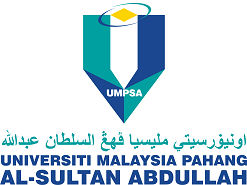Effect of sintering temperature on density, hardness and tool wear for alumina-zirconia cutting tool
DOI:
https://doi.org/10.15282/jmes.13.1.2019.21.0391Keywords:
Alumina, zirconia, cutting tool, sintering, hardness, density, machining, tool wearAbstract
Combination of alumina (Al2O3) and zirconia (ZrO2) as cutting tool have been established themselves as a dominant in ceramic category for dry machining. The mechanical properties of Al2O3-ZrO2 cutting tool were critically dependent on its density and hardness, which affected by the powder preparation and sintering processes. This paper present the effect of sintering temperature on density, hardness and tool wear of Al2O3-ZrO2 cutting tool. Specific composition of 80-90 wt% Al2O3 and 10-20 wt% ZrO2 powders were mixed and ball milled for 12 hours. These powders then were compacted in the form of RNGN120600 designated cutting tool by using manual hydraulic press before undergone secondary compaction by Cold Isostatic Press. The compacted powders then were sintered from 1200oC to 1400oC at constant 9 hours soaking time. For each sintered cutting tool, evaluation has been made based on the density and hardness. By using AISI 1045 as a workpiece material, the wear performance of the selected cutting tools were evaluated within 200-350 m/min cutting speeds, 0.1 mm/rev feed rate and 0.5 mm depth of cut. The results shows that the sintering temperature at 1400oC and 9 hours soaking time produced maximum relative density and hardness for 90 wt% Al2O3 and 10 wt% ZrO2 at 94.17% and 63.4 HRC respectively. Cutting tool contained with 80 wt% Al2O3 and 20 wt% ZrO2 contributed maximum relative density of 97% and hardness of 70.07 HRC. Maximum tool life recorded was 156s at 200 m/min cutting speed. Wear mechanisms of fabricated cutting tool dominated by the notch and flank wear at the early stage of machining and formation built up edge at the end of machining process.
References
Kanika P, Shankar C. A decision guidance framework for non traditional machining processes selection. Ain Shams Engineering Journal 2018;9(2):203-14.
Izamshah, R, Zulhairy M, Kasim MS, Hadzley M, Amran M, Amri M, Sivaraos. Cutter Path Strategies for Shoulder Milling of Thin Deflecting Walls. Advanced Materials Research 2014;903:175–80.
Kamely MA, Noordin MY, Hashim AYB, Yahya AY, Dan MMP. The Performance Of Low Cost Cutting Tools When Machining Hardened Steel Of 60 Hrc. Journal Of Advanced Manufacturing Technology 2012;6(1).
Bakar MHA, Ahamd SSN, Abdullah RIR, Ali MAM, Kasim MS, Sulaiman MA, Raffi NFM. Evaluation of the Surface Integrity when Machining LM6 Aluminum Metal Matrix Composites Using Coated and Uncoated Carbide Cutting Tools. Applied Mechanics and Materials 2014;465:1049-53.
Wang D, Xue C, Cao Y. Zhao J. Fabrication and cutting performance of an Al2O3/TiC/TiN ceramic cutting tool in turning of an ultra-high-strength steel. The International Journal of Advanced Manufacturing Technology 2017;9:1967-76.
Varaprasad B, Srinivasa RC, Vinay PV. Effect of Machining Parameters on Tool Wear in Hard Turning of AISI D3 Steel. Procedia Engineering 2014;97:338-45.
Azhar AZA, Ratnam MM, Ahmad ZA. Effect of Al2O3/YSZ microstructures on wear and mechanical properties of cutting inserts. Journal of Alloys and Compounds 2009;478:608-14.
Hadzley AB, Naim F, Faiz Mokhtar M, Norfauzi T, Umar A, Aziz Adam A, Izamshah R, Kasim S. Fabrication and Machining Performance of Powder Compacted Alumina Based Cutting Tool. MATEC Web of Conferences 2018;150:04009.
Mondal B, Mandal N, Doloi B. Development of Ce‐PSZ‐/Y‐PSZ‐Toughened Alumina Inserts for High‐Speed Machining Steel. International Journal of Applied Ceramic Technology 2014;11:228-39.
Manshor H, Abdullah EC, Azhar AZA, Sing YW, Ahmad ZA. Microwave sintering of zirconia-toughened alumina (ZTA)-TiO2-Cr2O3 ceramic composite: The effects on microstructure and properties. Journal of Alloys and Compounds 2017;722:458-66.
Azhar AZA, Choong LC, Mohamed H, Ratnam MM, Ahmad ZA. Effects of Cr2O3 addition on the mechanical properties, microstructure and wear performance of zirconia-toughened-alumina (ZTA) cutting inserts. Journal of Alloys and Compounds 2012;513: 91-6.
Manshor H, Azhar AZA, Rashid RA, Sulaiman S,Abdullah EC., Ahmad ZA. Effects of Cr2O3 addition on the phase, mechanical properties, and microstructure of zirconia-toughened alumina added with TiO2 (ZTA–TiO2) ceramic composite. International Journal of Refractory Metals and Hard Materials 2016;61:40-5.
Vasudevan R, Karthik T, Ganesan S. Jayavel R. Effect of microwave sintering on the structural and densification behavior of sol-gel derived zirconia toughened alumina (ZTA) nanocomposites, Ceramics International 2013;39(3):3195-204.
Manshor H, Md. Aris S, Azhar AZA, Abdullah EC, Ahmad ZA. Effects of TiO2 addition on the phase, mechanical properties, and microstructure of zirconia-toughened alumina ceramic composite. Ceramics International 2015;41:3961-67.
Yin Z, Huang C, Yuan J, Zou B, Liu H, Zhu H. Cutting performance and life prediction of an Al2O3/TiC micro–nano-composite ceramic tool when machining austenitic stainless steel. Ceramics International 2015;41:7059-65.
Szutkowska, M. Fracture Toughness of Advanced Alumina Ceramics and Alumina Matrix Composites Used for Cutting Tool Edges. Journal of Achievements in Materials and Manufacturing Engineering 2012;54:202-10.
Azhar AZA, Mohamad H, Ratnam MM, Ahmad ZA. The effects of MgO addition on microstructure, mechanical properties and wear performance of zirconia-toughened alumina cutting inserts. Journal of alloys and compounds 2010;497:316-20.
Singh BK, Mondal B, Mandal N. Machinability evaluation and desirability function optimization of turning parameters for Cr2O3 doped zirconia toughened alumina (Cr-ZTA) cutting insert in high speed machining of steel. Ceramics International 2016;42:3338-50.
Sabuan NA, Zolkafli N, Mebrahitom A, Azhari A, Mamat O. The development of Zirconia and Copper toughened Alumina ceramic insert. IOP Conference Series: Materials Science and Engineering 2018;342:012106.
ISO 3685:1993 Tool-life testing with single-point turning tools.
Vladimír P, David S, Karel M. Pressure-less rapid rate sintering of pre-sintered alumina and zirconia ceramics. Ceramics International 2018;44(9),10840-46.
Ji W, Parker B, Falco S, Zhang JY, Todd R. Ultra-fast firing : Effect of heating rate on sintering of 3YSZ, with and without an electric field. Journal of the European Ceramic Society 2017;37(6):2547-51.
Cantwell PR, Ma S, Bojarski SA, Rohrer GS, Harmer, MP. Expanding time–temperature-transformation (TTT) diagrams to interfaces: A new approach for grain boundary engineering. Acta Materialia 2016;106:78–86.
Meena KL, Karunakar DB. Development of alumina toughened zirconia nanocomposites using spark plasma sintering. Materials Today: Proceedings 2018;5(9):16928-35.
Adriana SAC, Adilson LC, Christiane LO, Julieta AF, Elíria MJAP. Effect of sintering curves on the microstructure of alumina–zirconia nanocomposites. Ceramics International 2014;40(9):14669-76.
Francisco ATG, Kátia LS, Vania T, Juliano JP, Eliria MJAP. Correlation between microstructure and mechanical properties of Al2O3/ZrO2 nanocomposites. Ceramics International 2009;35(2):741-45.
Kuntz M., Krüger R. The effect of microstructure and chromia content on the properties of zirconia toughened alumina. Ceramics International, 2018;44:2011-20.
Stephanie P, Pinar D, Rueya D, Heiko S, Michael RB. Synthesis of zirconia toughened alumina (ZTA) fibers for high performance materials. Journal of the European Ceramic Society 2016;36(3):725-731
Bipin KS, Himadri R, Biswanath M, Sibendu SR, Nilrudra M. Development and machinability evaluation of MgO doped Y-ZTA ceramic inserts for high-speed machining of steel. Machining Science and Technology Singh 2018;1-15.
Salam A, Saeed M, Elizabeth K, Andrew JR. Processing and Properties of Zirconia-Toughened Alumina Prepared by Gelcasting. Materials 2015;8:4344-62.
Valentina N, Paola P, Laura M., Jérôme C. Elaboration of Alumina-Zirconia Composites: Role of the Zirconia Content on the Microstructure and Mechanical Properties. Materials. 2013;6:2090-102.
Norfauzi T, Hadzley AB, Umar UAA, Faiz MM, Naim MF, Aziz AA. Comparison machining performance of Al2O3, ZTA and ZTA doped Cr2O3 cutting tools on AISI 1045”, Material Research Express 2019;6(1):016547.
Milak PC, Minatto FD, De Noni Jr. A, Montedo ORK. Wear performance of alumina-based ceramics - a review of the influence of microstructure on erosive wear. Ceramica 2015;61:88–103.
Azlan UAA, Hadzley M, Tamin NF, Noor FM, Azhar AA, Yusoff MR. Observation of Built-up Edge Formation on a Carbide Cutting Tool with Machining Aluminium Alloy under Dry and Wet Conditions. MATEC Web of Conferences 2017;97:01076.
Atlati S, Haddag B, Nouari M, Moufki A. Effect of the local friction and contact nature on the Built-Up Edge formation process in machining ductile metals. Tribology International 2015;90:217-27.
Gómez-Parra A, Álvarez-Alcón M, Salguero J, Batista M, Marcos M. Analysis of the evolution of the Built-Up Edge and Built-Up Layer formation mechanisms in the dry turning of aeronautical aluminium alloys Wear. 2013;302(1–2):1209-18.
Da-Wang T, Wei-Ming G, Hong-Jian W, Hua-Tay L, Cheng-Yong W. Cutting performance and wear mechanism of TiB2-B4C ceramic cutting tools in high speed turning of Ti6Al4V alloy. Ceramics International 2018;44(13):15495-502.
Kasim MS, Che Haron CH, Ghani JA,Sulaiman MA,Yazid MZA Wear mechanism and notch wear location prediction model in ball nose end milling of Inconel 718. Wear 2013;302(1-2):1171-79.
Naskar A, Chattopadhyay AK Investigation on flank wear mechanism of CVD and PVD hard coatings in high speed dry turning of low and high carbon steel. Wear 2018;396-397:98-106.
Sulaiman MA, Che Haron, CH, A Ghani J, Kasim MS. The study of wear process on uncoated carbide cutting tool in machining titanium alloy. Journal of Applied Sciences Research 2012;8(9):4821-27.
Downloads
Published
Issue
Section
License
Copyright (c) 2019 The Author(s)

This work is licensed under a Creative Commons Attribution-NonCommercial 4.0 International License.






